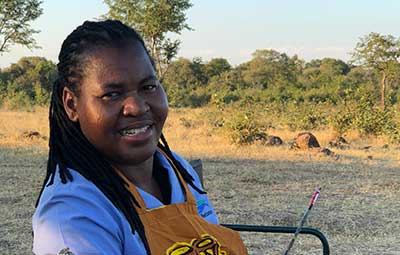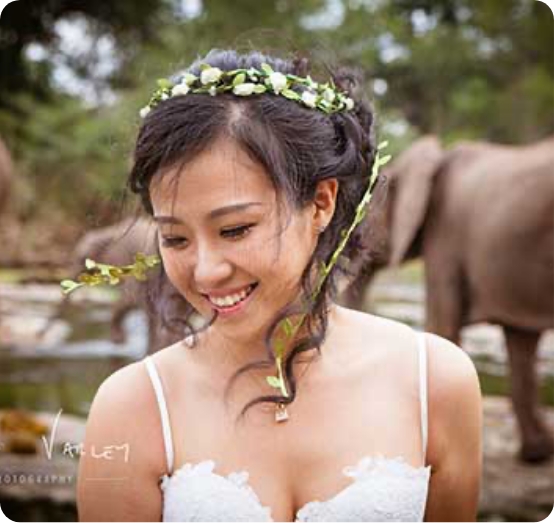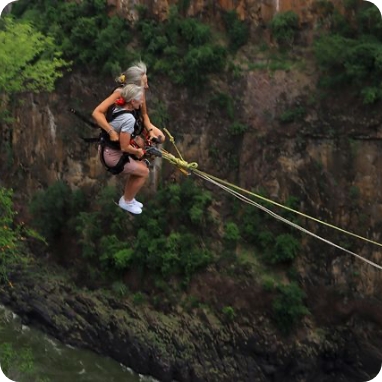The muggy afternoon heat was beginning to dissipate as Mike, our incredibly knowledgeable and charming guide, arrived to collect us from The Stanley and Livingstone. Almost immediately we saw a herd of zebra. This fairly common sighting suddenly became an interesting study in how zebra stripes act as a private air conditioning system, allowing them to stay blissfully cool in the heat of a Zimbabwean afternoon. Equally fascinating, although less romantic, we learnt that within the first few days of being born, baby zebras eat their mother’s dung. This provides them with roughage and ample bacteria to fight off infection during their vulnerable first days.
 Suddenly we were startled by a warthog whose impressive size and demeanor was somewhat diminished by the very obvious lack of his tail. Mike explained to us that it is common to see warthogs with no tails on the 6000-acre reserve, as there is fierce competition between warthogs and hyenas for the limited number of burrows. About 70% of the warthogs have lost their tails from reversing into a burrow and finding it occupied by sharp fanged rivals!
Suddenly we were startled by a warthog whose impressive size and demeanor was somewhat diminished by the very obvious lack of his tail. Mike explained to us that it is common to see warthogs with no tails on the 6000-acre reserve, as there is fierce competition between warthogs and hyenas for the limited number of burrows. About 70% of the warthogs have lost their tails from reversing into a burrow and finding it occupied by sharp fanged rivals!
Alerted by the smell, we were thrilled to see a pile of rhino faeces on the road. Mike explained to us how rhino have a unique system of detecting the presence of other rhino in the area. Male rhino ensure that after defecating they leave traces of urine and faeces on their back legs. These ‘calling cards’ drop off as he walks, clearly demarcating his area for other would-be trespassers! Female rhino dung can indicate an increase in oestrogen for potential suitors in the area.
Much like we humans will sniff a glass of wine trying to discern different scents and notes, so a rhino employs a similar, albeit rudimentary method to glean information. So the next time you raise a glass of wine to your nose and inhale deeply, think of the rhinos, one of which could be doing exactly the same thing at the same time. Cheers to you both!
Our glorious afternoon was complete when suddenly we came across not one, but five Black Rhino! Unperturbed by our presence and obvious excitement, these magnificent creatures strolled leisurely up to our vehicle, sniffing (of course) the air inquisitively and coolly regarding their star struck visitors. We realized how supremely privileged we were to see these 5 rhino (the herd comprises 7 in total) when Mike pointed out that the total black rhino population in the world stands now at a mere 1500. Depressing news indeed! For this reason the rhino on the reserve are regularly de-horned to deter poachers.
After the privilege of watching these incredible creatures, we made our way to the dam. Progress was delayed firstly by a herd of elephants waiting patiently for the babies to stop gambolling on the road and then by an enormous herd of buffalo whose progress indicated that they too were feeling the lethargy and peacefulness of the early evening. After a glorious sunset, accompanied by perfectly made gin and tonics, delicious nibbles and a myriad of bird activity, we reluctantly left this stunning display of nature to make our way home, all of us enriched by an incredible afternoon in the capable hands of Mike.
TIPS:
- Wear neutral coloured clothing, a hat and sunglasses.
- Take cameras and binoculars- there’s plenty to see!








